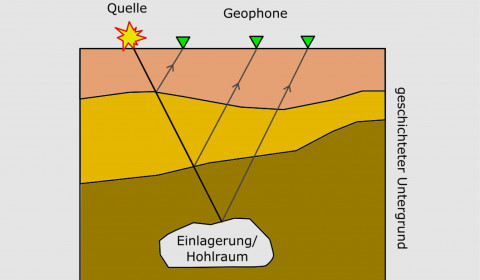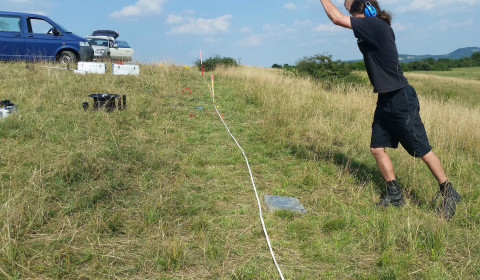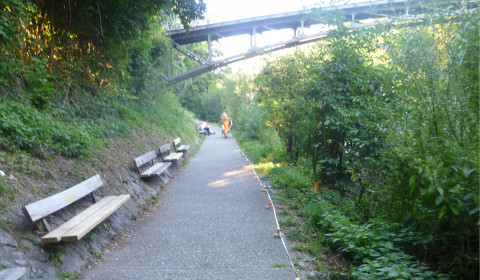Seismics
Superficially created seismic waves spread through the ground and are partly deflected and reflected by discontinuities and can then be recorded by geophones placed on the surface. Through the analysis of the travel times between source and receivers the seismic wave velocities in the underground can be determined which delivers useful information about the layering and structural situation of the subsurface.
Reflection and refraction seismic surveys focus on different types of seismic waves, each suitable for specific surveying goals and conditions. Seismic surveys can be set up on a small scale, creating elastic waves by manual hammering or on a larger scale by using dropping weights or seismic vibrators.
This method is suitable for detecting layer boundaries, faults or other structural or local inhomogeneities down to great depths (depending on geophone setup and source energy).
-

Schematic principle of a reflection seismic survey -

Example of seismic measurement using a hammer as a source for the detection of an anthropogenic void in the subsurface -

Seismic recorders (geophones) along a profile for the depth assessment of the hard rock boundary in the underground
